With so many interesting mixed breeds and designer dog breeds today, you can find a cross of almost any two breeds. The pomsky is a mixed breed, with a cross between the Siberian husky and Pomeranian. These adorable little dogs can vary in appearance, markings, and coloring, depending on which parent has the more dominant genes.
The pomsky breed is still relatively new, but they are already making a splash in the dog world. If you’re thinking about adopting one of these little fluffy pups, make sure you read the article below to find out how big full-grown pomskies get.
Pomsky Summary
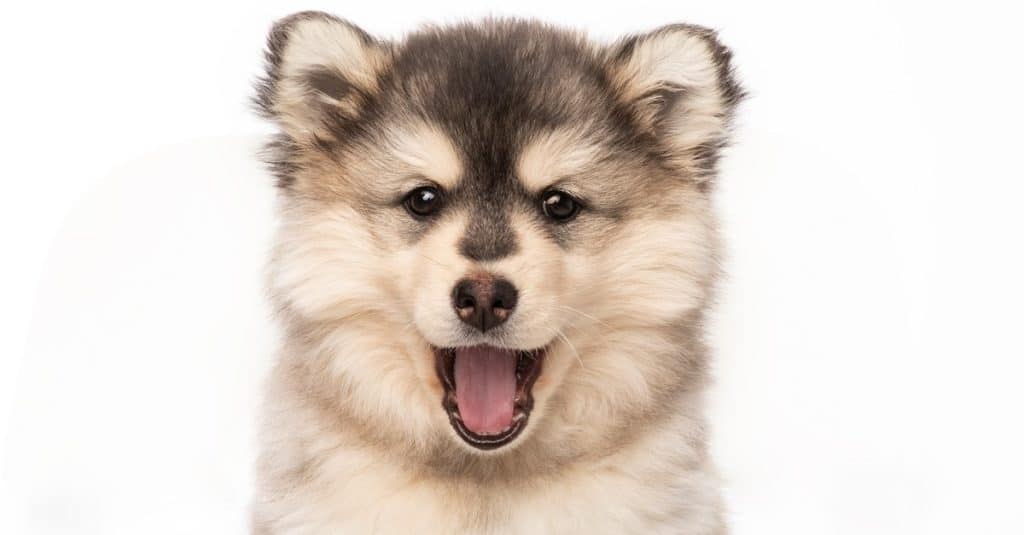
Since pomskies are not purebred dogs, there are no breed standards for temperament or appearance.
©Crystal T/Shutterstock.com
Despite their differences in appearance, the Siberian husky and the Pomeranian share several personality traits. As a result, their hybrid pups inherit many of those traits. For instance, both breeds are intelligent, confident, loving, and playful.
Pomskies are rather loud dogs, having inherited the husky’s vocal tendencies and the Pom’s yipping. They are also loyal and protective, which makes them great watchdogs. Their strong personalities contained within their short, compact frames make them unique little dogs.
Pomsky Growth and Weight Chart By Age
While pomskies adhere to general growth rates by age, it’s important to remember that this is a relatively new breed. Since huskies and Poms are so different in size, the offspring can vary as well, depending on which genes are dominant. For the purpose of our chart, we’ll look at the average size of a standard pomsky.
| Age | Average Male and Female Weight |
|---|---|
| Birth | 1-2 pounds |
| 1 Week | 4-6 pounds |
| 5 Weeks | 5-7 pounds |
| 2 Months | 7-10 pounds |
| 3 Months | 9-15 pounds |
| 4 Months | 11-18 pounds |
| 5 Months | 14-21 pounds |
| 6 Months | 18-24 pounds |
| 7 Months | 20-25 pounds |
| 8 Months | 22-26 pounds |
| 9 Months | 23-27 pounds |
| 10 Months | 24-28 pounds |
| 11 Months | 25-29 pounds |
| 12 Months | 25-30 pounds |
When Will My Pomsky Stop Growing?
Since pomskies are half Pomeranian, which is a toy breed, and half Siberian Husky, which is a medium breed, the mixed breed pup is typically within the small dog breed class. However, some Pomskies can be medium-sized dogs if their husky genes are more dominant. They can even be toy-breed-sized if their Pomeranian parent’s genes prevail.
Most pomskies stop growing at about 12 months. If it’s more on the small or toy-breed size, it may be fully grown at 10 months. If, however, it’s more on the medium breed side, it will probably take a full year to reach its full-grown weight.
Between the 6-month and 12-month mark, pomskies are usually getting close to their adult height. They will most likely put on additional muscle and weight until they’re a year old, but they’ll look pretty much like their full-grown selves.
How Big Will My Pomsky Be When It’s Fully Grown?
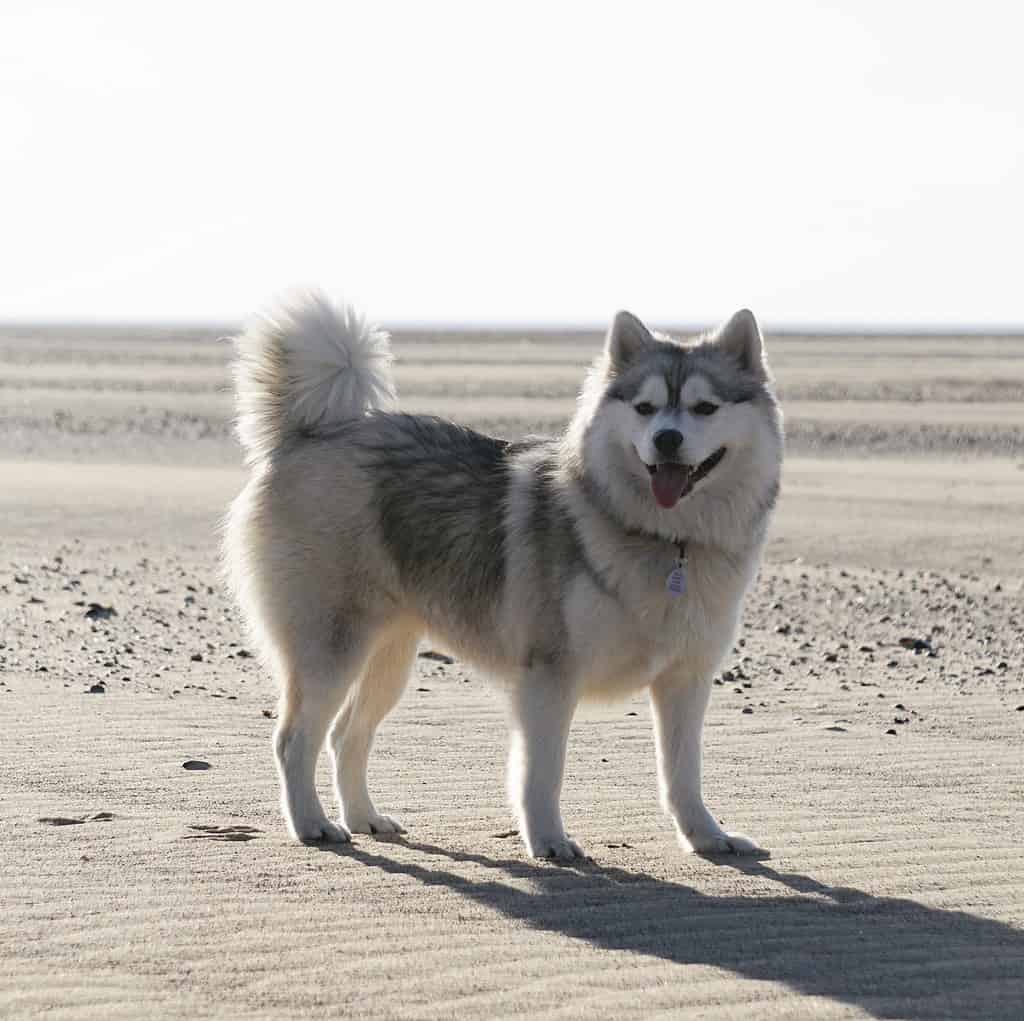
Since pomskies have such diverse parentage, their adult sizes can vary greatly.
As mentioned in the article, the full-grown size of your pomsky will depend a lot on which parent’s genes are dominant. Often, the pomsky will turn out to be somewhere close to the middle of the husky size and Pomeranian size. Therefore, you should look at your pomsky’s parents to give you an idea of how your puppy will look when it’s grown.
Proper nutrition and exercise will also play roles in how big your full-grown pomsky will be. If you give your puppy the best start possible with vet-recommended food and adequate exercise, you can expect your adult dog to weigh anywhere between 25 and 30 pounds.
When Should My Pomsky Be Spayed or Neutered?
The American Kennel Club recommends waiting for your dog to reach sexual maturity before spaying or neutering them. Different breeds mature at different ages. Therefore, waiting until your dog reaches their particular sexual maturity may decrease the risk of joint disorders, some cancers, and other health problems that may be related to spaying or neutering them too early.
Most pomskies are considered to be within the small dog breed. As a result, they mature sexually around 6 to 9 months of age. If your pomsky is on the large side, though, you should wait until they’re 12 to 18 months of age. It’s essential that you ask your veterinarian for their assessment when deciding when to have your pomsky’s procedure.
When Should My Pomsky Be Housebroken?
Pomskies are an intelligent breed, but house training can still be a frustrating undertaking. Many professional trainers recommend crate training your pup for the best results. Crate training typically takes about 3 days to 1 week. It may be hard to hear your little pup whine and bark initially, but patience, endurance, and sticking to a schedule can help you house-train them more easily.
Your puppy has a small bladder for the first few months of their life. Therefore, you’ll have to be proactive in taking them out for frequent potty trips. If you immediately start taking your pomsky out regularly and praise them for going potty outside, they should be fully housebroken by five or six months.
When Should My Pomsky Stop Eating Puppy Food?
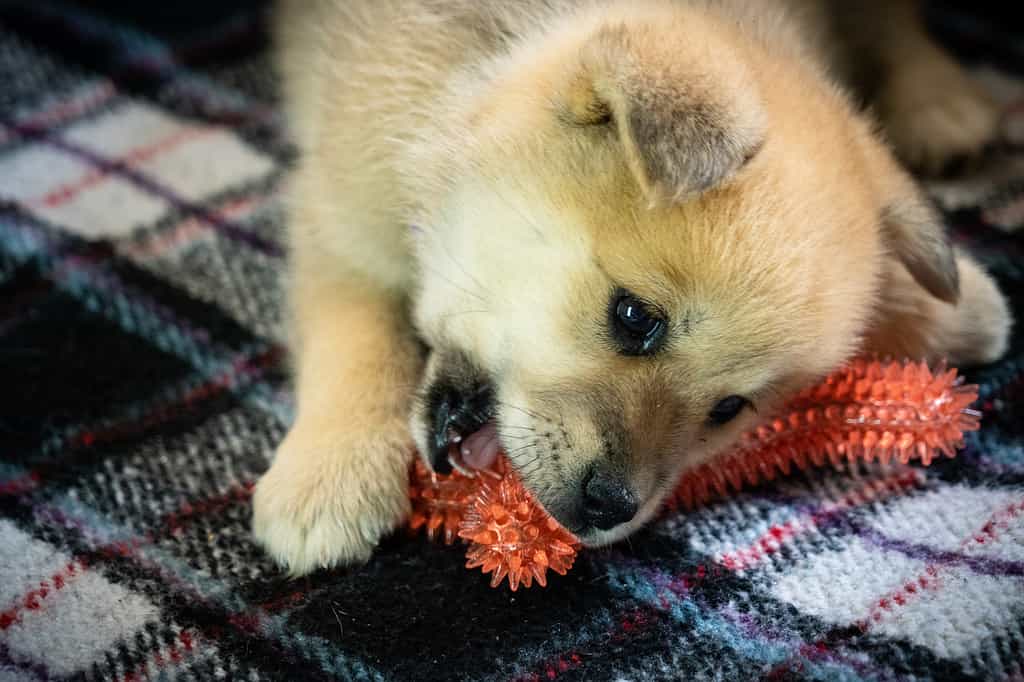
Puppies in general should eat puppy food until they’re done growing.
©RoschetzkyIstockPhoto/iStock via Getty Images
When your pomsky is 2 to 6 months old, they’ll need to be fed 3 meals of high-quality, nutrient-rich puppy food each day. They can have nutritious snacks in between meals. At 6 months of age, they can start having 2 meals a day with snacks between meals. At about 7 to 9 months, you can start feeding them adult food.
Naturally, it’s always best to consult with your dog’s veterinarian. Even when your pet is a full-grown pomsky, it will be important to feed them nutritious adult food.
When Will My Pomsky Start Losing Teeth?
When your pomsky puppy is about 4 months old, they will begin to lose their baby incisors. At 5 months, their baby canine teeth fall out. Their adult equivalent teeth grow in soon after they lose their puppy teeth. Your pomsky should start getting their molars at about 6 months.
When Should I Start Training My Pomsky?
First of all, it’s important to understand that pomskies aren’t easy to train. They’re highly intelligent, demanding, and stubborn. Therefore, it’s critical to start training these pups as soon as you get them. Secondly, like other dogs, your pomsky will respond much better to positive and consistent training.
Puppies have short attention spans, so make the sessions short but frequent. You can keep the sessions as short as 5 minutes to reinforce the new cues you’re teaching your puppy. Enrolling your pomsky in a dog obedience training class may be a great option for you as well.
What Cues Should I Teach My Pomsky First?
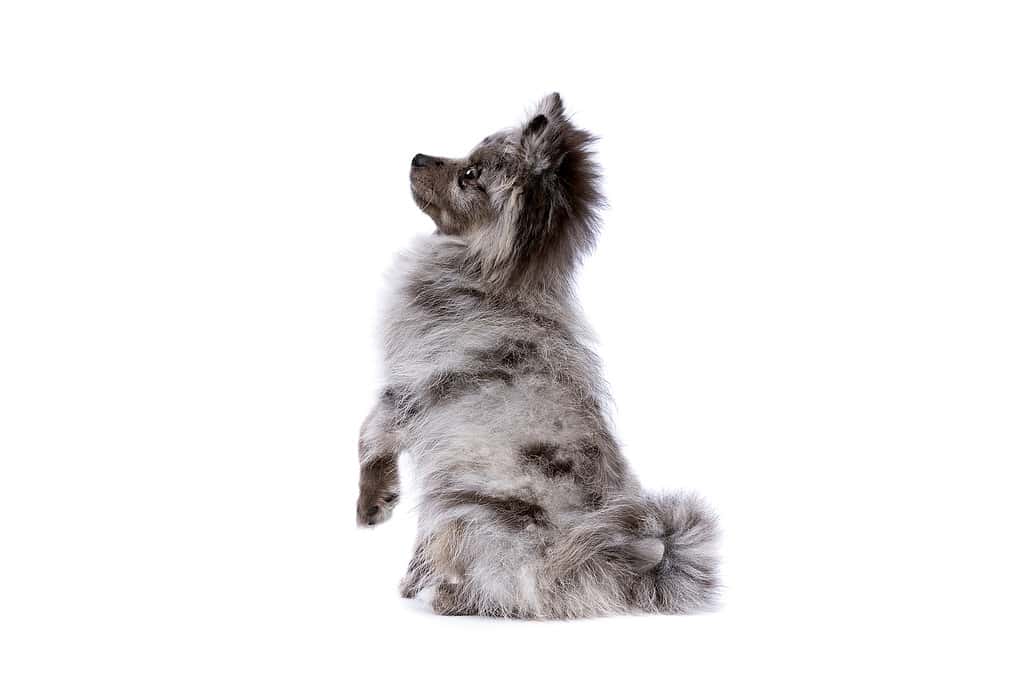
Pomskies are highly intelligent dogs.
©Eriklam/iStock via Getty Images
According to the AKC, there are five cues that all owners should teach their puppies. There are things that pomsky puppies need to learn immediately to ensure their safety. Let’s look at these five cues.
- Come – Teaching your pomsky to come ensures that you can call them if they’re heading into a dangerous situation.
- Heel – The goal of this cue is to enable you to loose-leash walk your puppy without them pulling on it.
- Sit – When you teach your pomsky to sit, they’ll be less likely to jump up on people. Moreover, if you teach them to sit at a curb before crossing a street, this will make walking them much safer.
- Down – Teaching your pup this cue can help them relax in an overwhelming situation. It can also help them to remain in a stay position for a longer period of time.
- Stay – This is another cue that will keep your dog safe. For instance, if you need them to stay in the car while you attach their leash, it will keep them from running out into potential danger.
These are important cues to teach your pomsky pup as soon as possible. It’s also important to teach them to get along with other people and animals. Socializing your puppy from an early age will help them adjust to and behave appropriately with strangers and other dogs.
When Will My Pomsky Calm Down?
With their husky genetics, pomskies are energetic little dogs. That said, there really is no age marker for when these puppies calm down. While many owners experience a slight mellowing of their pomskies at about 2 or 3 years of age, others may find their pets hyperactive until 5 or 6 years… or more.
The key to getting your pomsky to chill out is giving them the proper daily routine. This lively breed needs exercise and other outlets for their energy. They also do better when they’re not left alone for long periods of time.
Many owners have seen a marked improvement in their dogs’ behavior after taking their dogs for 30 minutes of exercise first thing in the morning every day. Socializing with other dogs and new people can also wear them out. Finally, teaching them new commands and giving them puzzle toys will go a long way to calming down your pomsky.
Pictures of Pomskies as Puppies
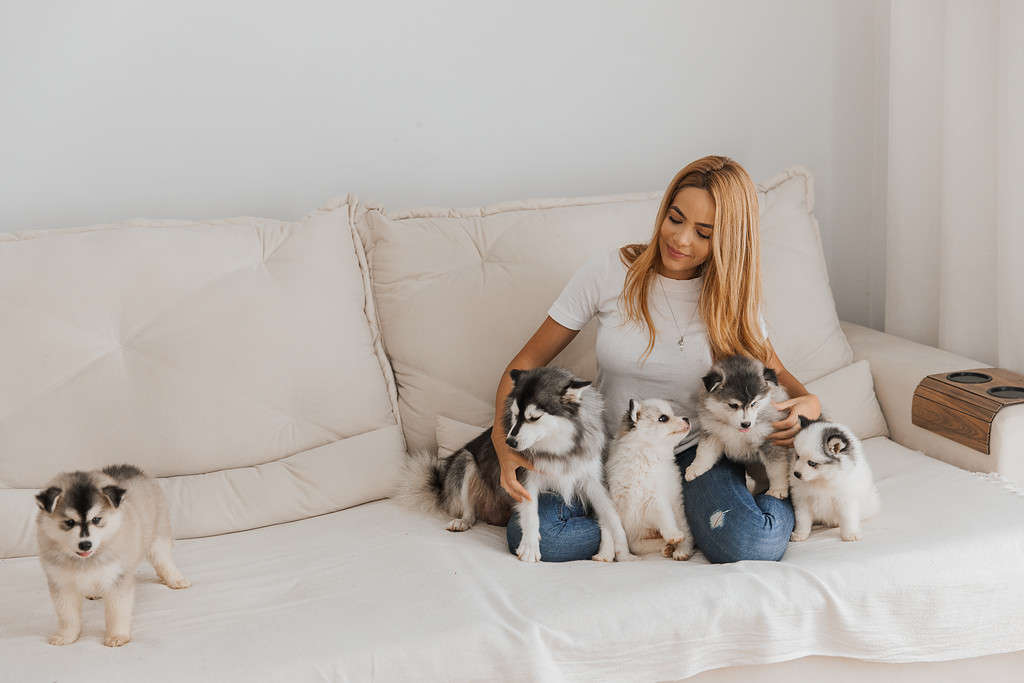
Pomskies are a relatively new designer breed of a Siberian husky and Pomeranian mix.
©Victor Ataide/iStock via Getty Images

The first recorded litter of pomskies was born in the United States in 2012.
©Victor Ataide/iStock via Getty Images
Pictures of Pomskies at 3 to 6 Months
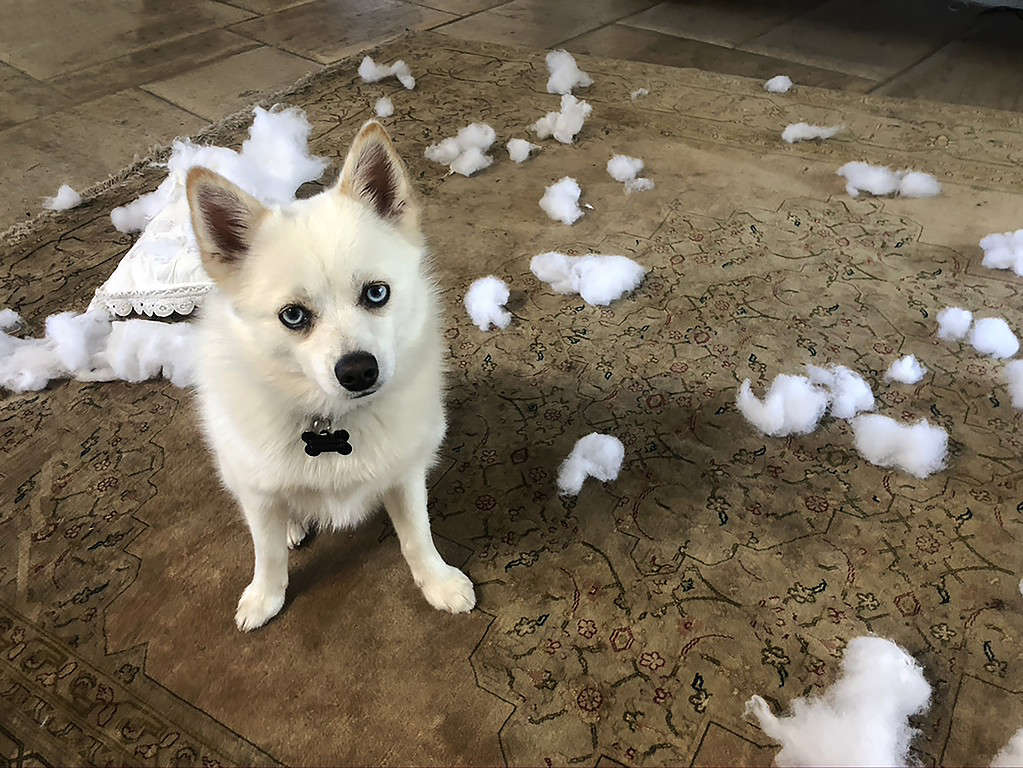
Pomskies are very energetic, so it’s important to give them positive outlets for their energy before it gets channeled into bad behavior.
©Salameh dibaei/iStock via Getty Images
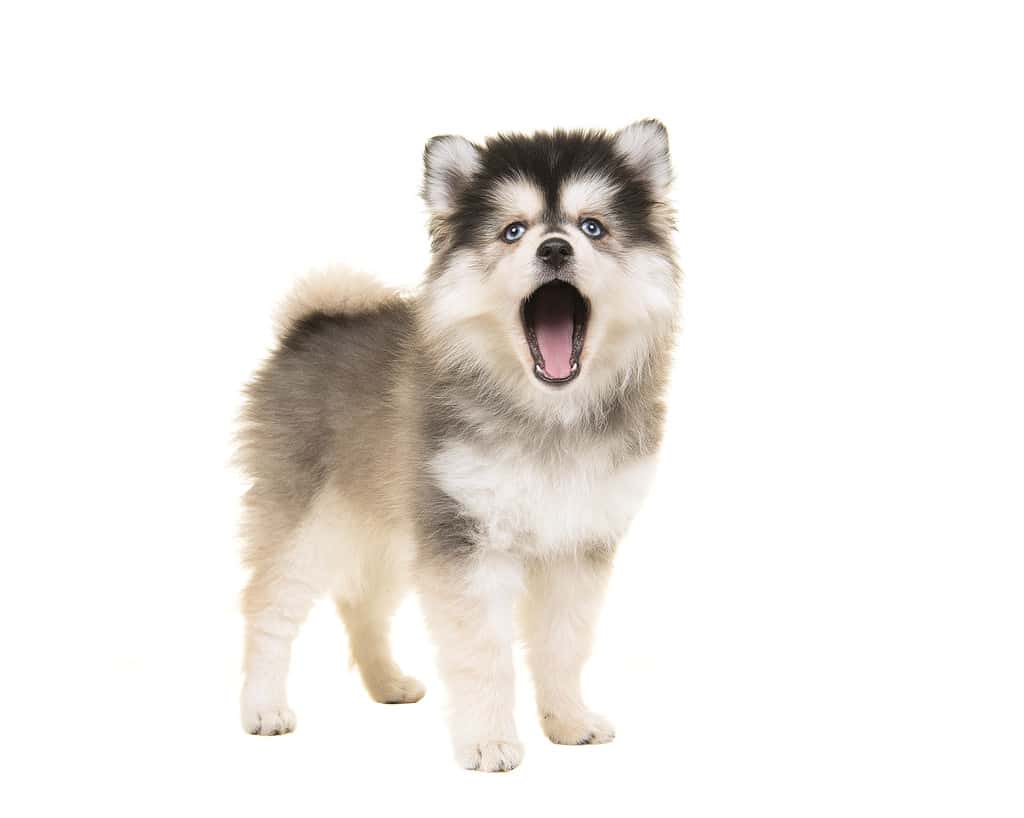
With the “talkative” husky parentage, pomskies are also quite vocal dogs.
©MirasWonderland/iStock via Getty Images

Pomsky puppies can look more like huskies or more like Pomeranians, depending on the dominant gene.
©ULADZIMIR CYARGEENKA/iStock via Getty Images
Pictures of Fully Grown Pomskies
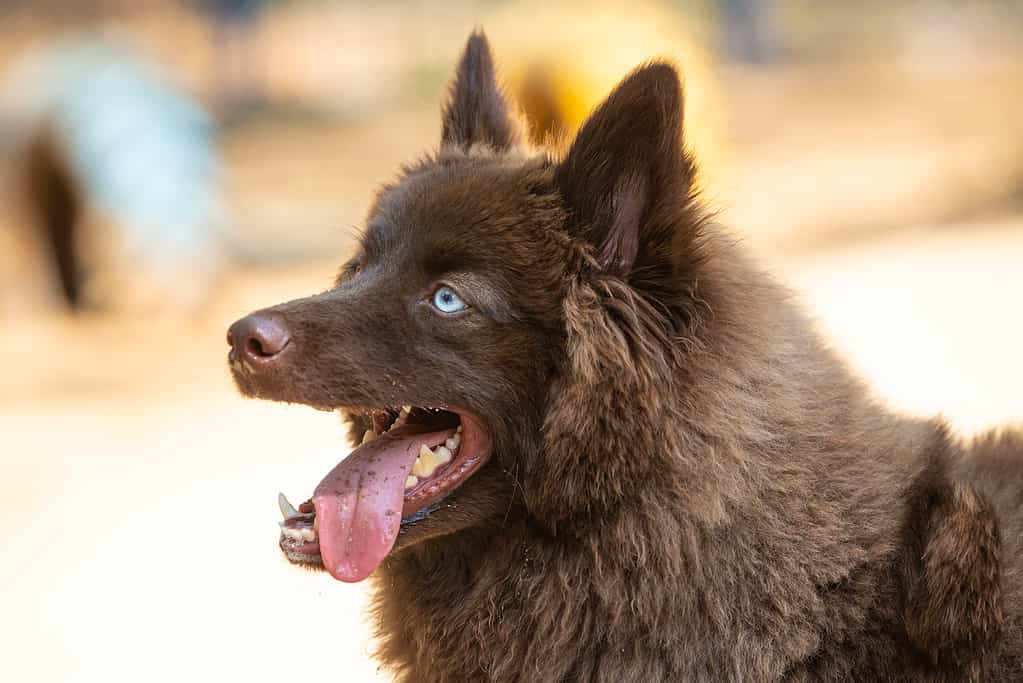
Pomskies come in a variety of gorgeous colors, and they can have a wide spectrum of eye colors.
©William Rodrigues dos Santos/iStock via Getty Images
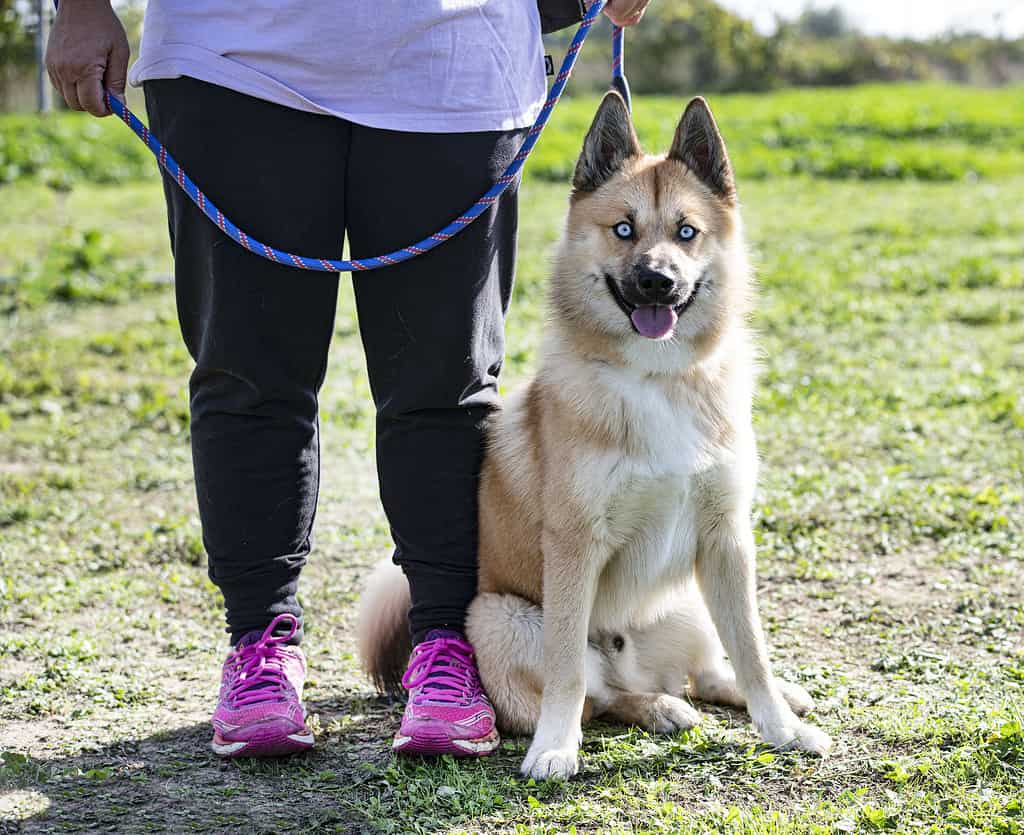
It’s important to train your pomsky for safety and socialization reasons.
©cynoclub/iStock via Getty Images
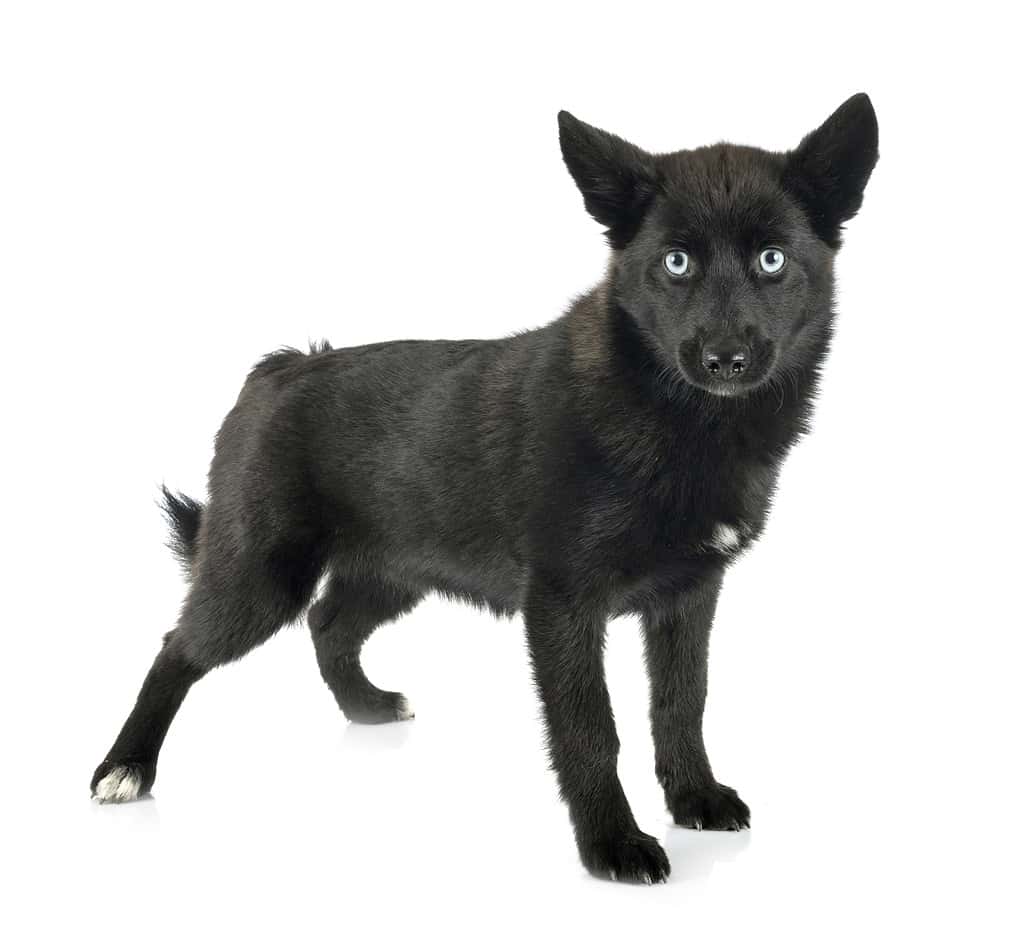
Full-grown pomskies can be big, medium-sized, or small, but they’re all beautiful and unique.
©cynoclub/iStock via Getty Images
Ready to discover the top 10 cutest dog breeds in the entire world?
How about the fastest dogs, the largest dogs and those that are -- quite frankly -- just the kindest dogs on the planet? Each day, AZ Animals sends out lists just like this to our thousands of email subscribers. And the best part? It's FREE. Join today by entering your email below.
Thank you for reading! Have some feedback for us? Contact the AZ Animals editorial team.








